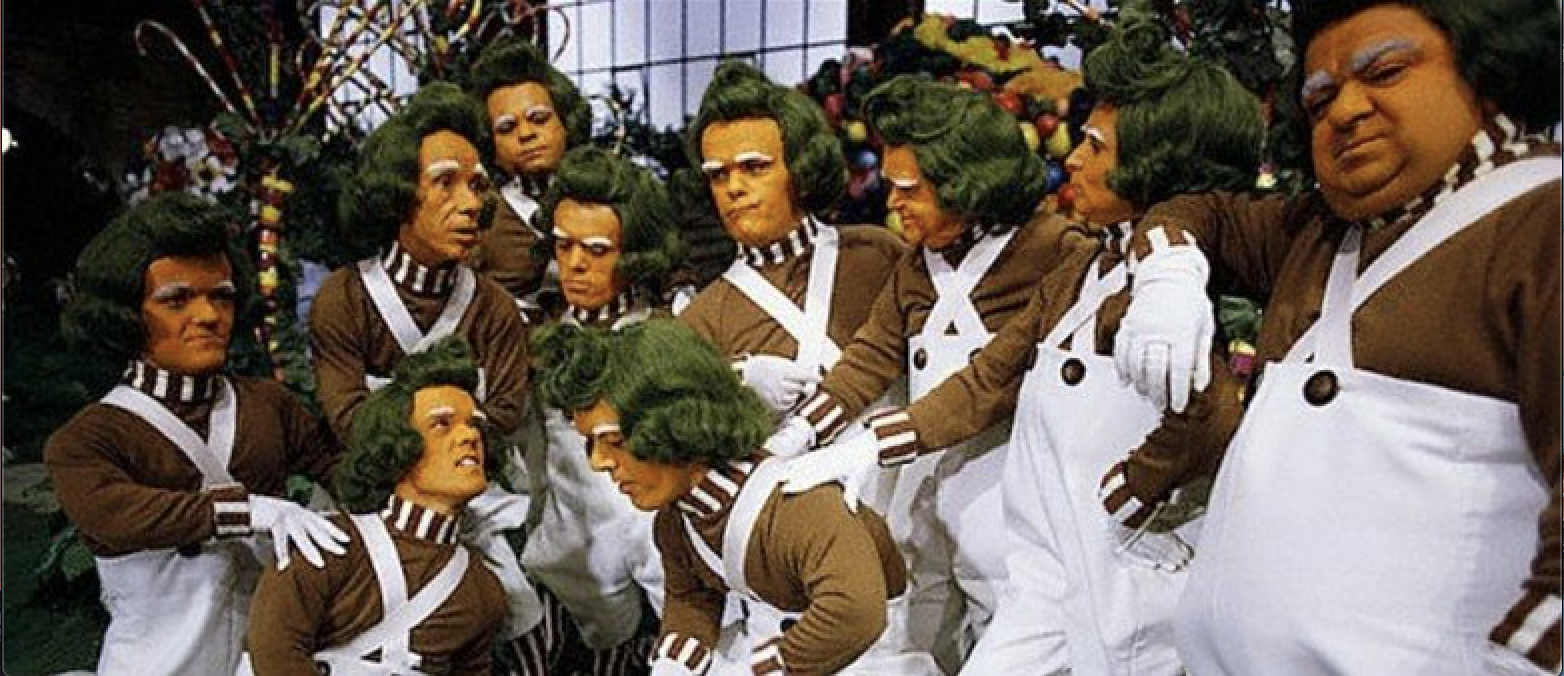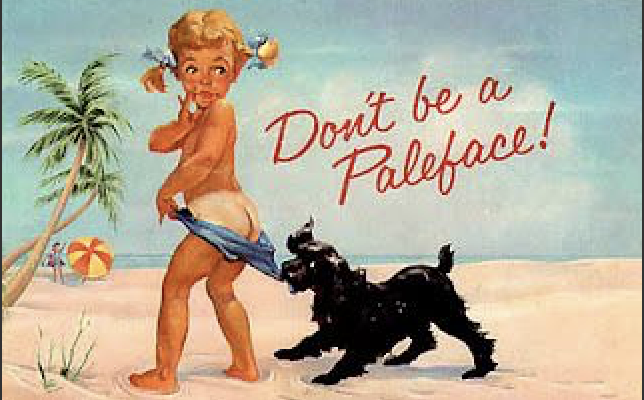If you’re a serious competitive DanceSport athlete you embrace a lot of fake stuff… eyelashes, hair pieces, padding in places that need it and of course, the pièce de résistance: the fake tan. No need to worry as you find a place on the dance floor for your first dance. You haven’t mistakenly stumbled into an Oompah-Loompah convention. You are indeed at a ballroom dance competition.

Ballroom dancing is an aesthetic sport, which means in addition to executing routines as flawlessly as possible, one also must make every effort to look his or her absolute best. Superficial? Maybe, but trust me. I’ve given this A LOT of thought and the bottom line is this. If you want to achieve any amount of success you’ve got to embrace the fake tan.
Don’t misunderstand me. I hate fake tanning. Hate. It. It’s my least favorite thing (in fact, it’s the only thing I don’t like) about ballroom dancing. Before every single dance competition, as I begin my fake tanning regimen, I ask myself the same question. Do I really need to do this? The short answer is yes. The long answer… because you just do.
First off, everybody knows tan fat is far easier on the eyes than pale fat. Period. End of discussion. I don’t know why. It just is. It’s a weird phenomenon, but for some inexplicable reason tanned skin seems to accentuate muscle contours, which in turn makes you appear leaner. On top of that, harsh stage lighting has a tendency to make even the healthiest people look cadaver-like. A really, really overdone fake-tan actually makes your skin tone look natural under the lights on the dance floor.
There are two major categories of products designed to turn one’s pallor from sickly to sun-kissed: topical tanners and chemical tanners.
Topical tanners, also known as body makeup, come in cream and powder forms and are applied topically to the skin similar to the way women apply foundation to the face. The problem with topical tanning products is they come off when you sweat. Everywhere. You’ll find yourself leaving tan smudges on bed sheets, towels and tissues, on upholstered furniture, on toilet seats, on your partners costume and on your own.
Chemical tanners, also known as sunless or self-tanning products, are available as sprays, lotions, creams and mousses. The active ingredient in chemical tanners is called dihydroxyacetone (DHA). DHA chemically reacts with the amino acids in dead cells on the surface of the skin and produces a temporary brown discoloration. DHA is not absorbed into the skin and tans typically last a few days before fading.
I’ve tried dozens of products. Topical tanners aren’t for me. They make my skin itch and they make a mess out of my dresses, not to mention post-competition hygiene leaves the hotel bathroom looking like someone re-enacted the shower scene from Psycho.
Rest assured chemical tanners are not perfect either. The biggest drawback, in my opinion, is they make you smell seriously bad. The products themselves don’t smell bad. It’s the chemical reaction that causes the smell which ranges in pungency from burnt skin to urine to actual body-odor-stank. The smell lasts until the product is washed off the skin and since it takes me four applications over four days to achieve the perfect just-plucked-from-the-sweet-potato-patch level of skin discoloration, I spend roughly 16 hours stinking to high heaven.
So there you have it. How you arrived at this point in your dance journey matters not. You’re here now and unless you were born with naturally dark skin (in which case I’m sorry you wasted your time reading this post) you need a fake tan so you might as well embrace it. Don’t be a paleface. Find the tanning method that works best for you and embrace the fake tan.

Coming soon Do I Really Need to Tan My Armpits?
© Copyright 2020 The Dancing Housewife All Rights Reserved
